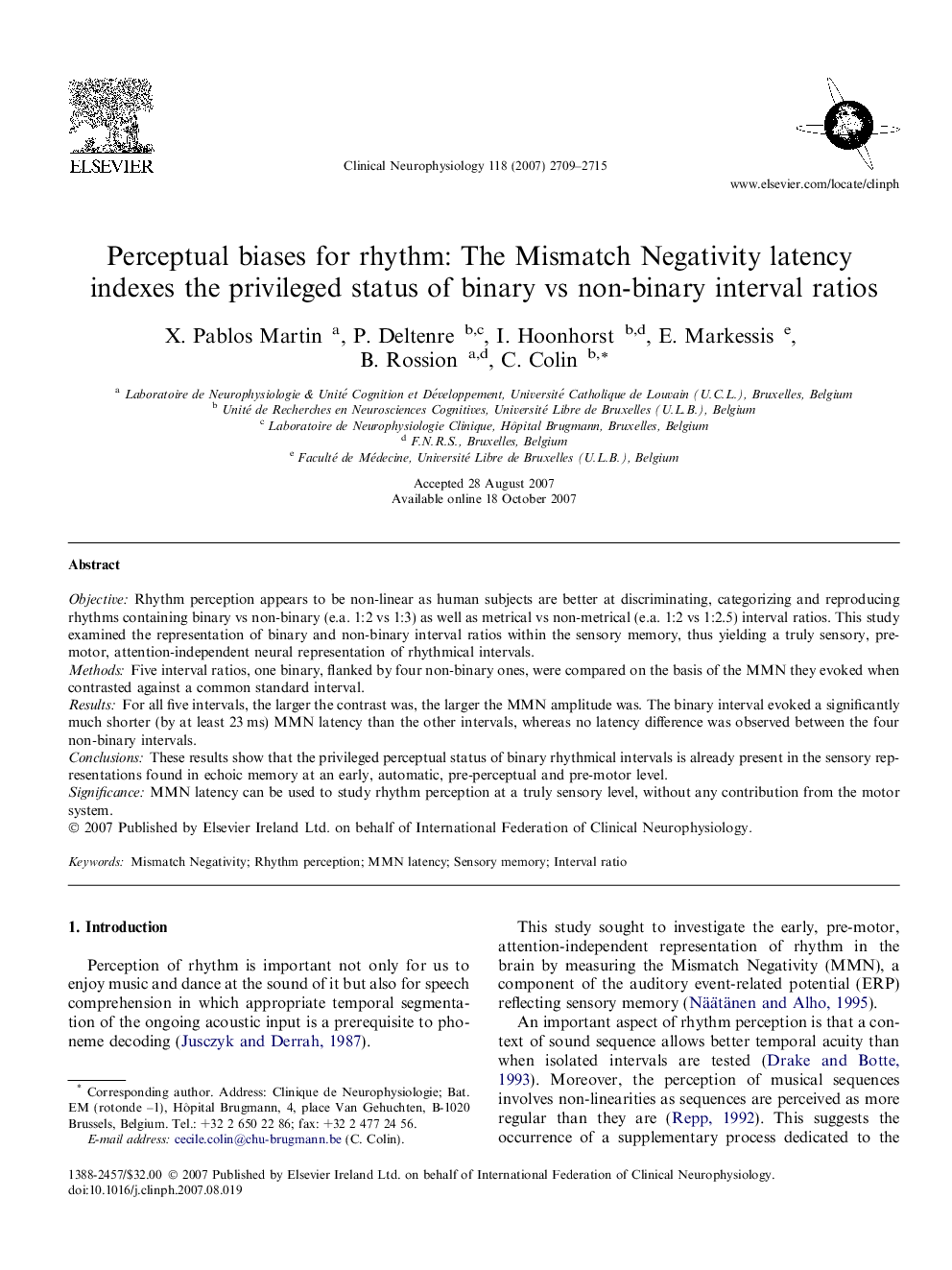| Article ID | Journal | Published Year | Pages | File Type |
|---|---|---|---|---|
| 3047232 | Clinical Neurophysiology | 2007 | 7 Pages |
ObjectiveRhythm perception appears to be non-linear as human subjects are better at discriminating, categorizing and reproducing rhythms containing binary vs non-binary (e.a. 1:2 vs 1:3) as well as metrical vs non-metrical (e.a. 1:2 vs 1:2.5) interval ratios. This study examined the representation of binary and non-binary interval ratios within the sensory memory, thus yielding a truly sensory, pre-motor, attention-independent neural representation of rhythmical intervals.MethodsFive interval ratios, one binary, flanked by four non-binary ones, were compared on the basis of the MMN they evoked when contrasted against a common standard interval.ResultsFor all five intervals, the larger the contrast was, the larger the MMN amplitude was. The binary interval evoked a significantly much shorter (by at least 23 ms) MMN latency than the other intervals, whereas no latency difference was observed between the four non-binary intervals.ConclusionsThese results show that the privileged perceptual status of binary rhythmical intervals is already present in the sensory representations found in echoic memory at an early, automatic, pre-perceptual and pre-motor level.SignificanceMMN latency can be used to study rhythm perception at a truly sensory level, without any contribution from the motor system.
